By Bob Difley
 The slowly fading recession seems to have energized campers this season as campground usage is up and reservations become harder to nail down. This becomes a particular problem with those of us who procrastinate, make last-minute travel decisions, or find ourselves wherever our RVs lead us–and most of the time without campground reservations. But don’t let that discourage you from visiting the national parks, you just need to practice some tricks and tips for increasing your odds of securing a campsite.
The slowly fading recession seems to have energized campers this season as campground usage is up and reservations become harder to nail down. This becomes a particular problem with those of us who procrastinate, make last-minute travel decisions, or find ourselves wherever our RVs lead us–and most of the time without campground reservations. But don’t let that discourage you from visiting the national parks, you just need to practice some tricks and tips for increasing your odds of securing a campsite.
Many of our national parks (NP) are adjacent to or surrounded by national forests (NF) that will have alternative camping options, ranging from improved campgrounds to boondocking in un-designated campsites. You can use these options for first night camping followed by a strategy of obtaining a NP campsite the next day, or as your main campsite from which you can visit the NP by tow or toad, returning each night to you NF campsite.
It would be all but impossible to obtain a campsite in the NP after a day’s travel, arriving in mid-afternoon or later, since most NP fill well before noon, even on week days. A NF campsite will probably be your best bet, since most private campgrounds or RV resorts will lie outside the forest on private land and well away from the NP. They are also often filled by reservations for the summer months and have few–if any–first-come spots.
Follow these tips for your best chances of getting a campsite when you have no reservation and with minimal hassle and stress.
- Research the adjacent NF for campgrounds, identifying those that will fit your rig, and the location of the area office.
- Research also for which NP campgrounds (you cannot boondock in the majority of NP) have sites large enough for your rig and confirm that some of them are held for first-come-first-serve campers.
- Plan your arrival for a week day rather than a weekend and visit the office for the NF on your way in, where the staff can tell you which campgrounds still have open sites.
- If all are full, ask for suggestions where you can boondock outside of an organized campground. (NOTE: You can camp anywhere in a NF providing you are not within a mile of an organized campground, are not blocking any roads (no matter how primitive), and camping is not expressly prohibited by signs or fences.)
- Once you have secured a campsite, determine whether the campground or boondocking site is acceptable for a few days, within easy access to the NP, and whether spending time to secure a NP campsite is going to be worth the time and effort. If not–stay where you are and enjoy a campsite that will most likely be more private and quieter than one in the park.
- If you decide to go for a site in the park, rise with the birds the next morning and plan to arrive in the campground of your choice very early–before 8:00 if possible–and get on the list for a campsite. Many of the most popular NP campgrounds will fill up very fast even on weekdays.
- If the park does not have a sign up list, you will have to roam around the campground looking for signs that someone is leaving, then hang out until they do and leave something in the campsite–a camp chair or “Taken” sign–to save it until you retrieve your rig.
- After you snag a campsite, return to your previous night’s campsite and retrieve your rig immediately and move to your campsite.
Each NP is slightly different how they handle campers without reservations. Obtain as much information as you can from their Web page or phone the visitor center so you are prepared and you will increase your odds of finding a campsite. Once you have tried this procedure a few times it will become easier, and you can save all those reservation fees and being locked into a rigid timetable.
For more tips on boondocking, check out my eBook, BOONDOCKING: Finding the Perfect Campsite on America’s Public Lands.

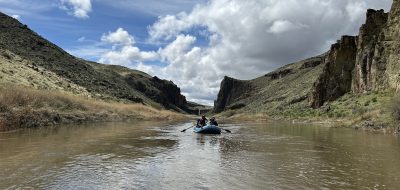
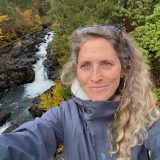
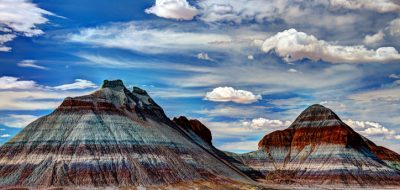
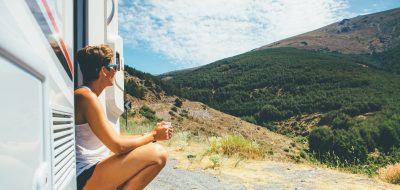

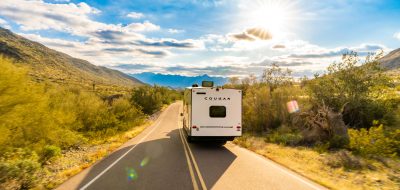
Bob
We love to boondock in our camper out here in Oregon, but during fire season that cuts out one of the best parts – the camp fire.
As for the National Parks reservation system, well it is sad indeed. Some will say, “Oh a five dollar increase” but on some National Forest CG’s the fee went from $6 to 10 in one year – that’s nearly double. As for California’s rate hikes in camp grounds last summer – just don’t even bother – you might as well stay in a motel.
Nomadic Spirit
We just returned from a 9 week trip to the Southwest visiting many of the national Parks, Big Bend, Grand Canyon both North and South Rim, Zion, Bryce, and the Arches, also Mesa Verta, what we found out in many instances was that when you see the “Sorry Full sign” at the gate and the ranger there says the campgrounds are full take it with a grain of salt, about 3 of those times we went to the campground registry office and asked if they had anything open and we got a site. Enjoy the journey
Art Stebes
Like Gary I don’t much like making reservations. Still if I know where I want to camp for a week, and if I know it’s likely to be full I’ll make a reservation for that place and wing it the rest of the way. I always seem to make it work, though I’ll admit to some late night challenges finding a place.
hoppe
Used to boondock all the time, as we didn’t want to drive to get to the fishing. Just starting to find out about the ‘fees’ and such. Our current rig is definitely NOT an Off roader. Better described as a tail dragger Class C.
Here in Colo. it’s $9 for on line reservations, 10 if you call them. WOW Finally read the ‘details’ on a CG yesterday. They add honor the Golden Age and Access etc, on the BASE fee {half off}. The res fee and the Electric Fee {$5 per day}, are not discounted.
I do So LUV the PRIVATIZATION OF OUR PUBLIC LANDS. … or not.
Good pointers on the instant gratification camping.
I’ve used the National Forests for distributed camping in Colo… Maps at the Forest Service, USGS, BLM Offices. These folks are very friendly and helpjul. Just remember to call or locate them before 5ish, Often not well staffed these days, and shorter hours than you might hope for, so look for the info stations as you enter the state.
Vickie
Question: Do the NF or NP’s ever overbook their reservations…like airlines do so that when you arrive, there still isn’t room?
Don Turner
Gary- I tried that in Indiana and a cop woke us up banging on our trailer with his billy club then almost arrested me for banging on the side of his police car with my 2 foot piece of a pool cue! I never stop in Indiana anymore unless I have too!
Gary
We, that is my wife and our dog, absolutely hate the reservation system, no matter how effective it is for the traveler that has no spirit left in them. We long for the good old days when , after traveling all day, find ourselves w/o a spot to lay our heads. A quick look at the map and we are off to another spot. Alas, no room at the inn. So, find a wide spot or a rest stop and sleep the night. Wake up and start all over again. Those that require a “reserved spot” cannot enjoy the search for a better place. All the fun is gone!! Your suggestion is right on the money, except for one thing.. Reservations are for the less adventurous, and they would be afraid to stay where there are no people to protect them. Just being safe, os too scared?? Thanks for the info. Hope some use it !!
Ron Butler
Bob,
Sure wish we would have known these tactics and techniques when we started rving just 5 years ago!! Could have stayed around the Grand Canyon longer – “why would we need reservations the end of April?!?” – by using the NF at the south entrance.
Could have saved a bundle of money at Zion NP by doing that instead of paying $60 or $70 at a private campground!! We had already paid for 2 or 3 nights when we drove past the campground the next morning into the park and saw people leaving!!
I hadn’t discovered Bob Difley’s valuable information yet, either!
Who says you can’t teach an old dog new tricks?
Jim G
We have successfully followed the suggestion to leave a camp chair at the site, and it has worked pretty well so far. Just to prevent the possibility that the chair mysteriously disappears before we return I loop a bicycle style chain through the chair and lock it to something secure, often the top grille on the camp fire ring. So far, so good.